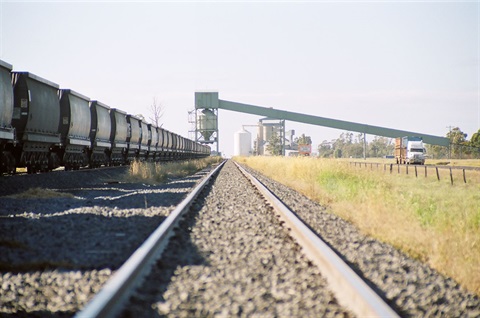Inland Rail Extension

Council advocates for connecting the Port of Gladstone with Inland Rail at Goondiwindi.
Incorporation of the proposed Gladstone to Goondiwindi rail link to current works on the Inland Rail project has many benefits for the Western Downs by enabling import and export opportunities through the world's largest dry bulk cargo ships, which in turn has a significant positive impact on the national economy.
Background
Australia’s freight task is expected to grow by more than 20 percent between 2018-2040. Interstate non-bulk freight is expected to increase by more than 2.6 percent per year over the same timeframe.
The development of Inland Rail will bring widespread and long-term benefits to Australia. It will better link producers, farmers and businesses to national and global markets, reduce our reliance on road freight and generate new opportunities for industries in our region. It will also reduce the impacts of heavy vehicles on road infrastructure, improve the reliability and resilience of the freight network, and free up the metropolitan rail networks for passengers and local freight.
The Issue
Inland Rail is a 1,600km freight rail line that will connect Melbourne and Brisbane via regional Victoria, New South Wales and Queensland.
The current project is late, over budget, and faces significant challenges connecting the proposed rail to the ports of Melbourne and Brisbane.
Desired Outcome
The proposed 680km Gladstone to Goondiwindi rail link will connect the Port of Gladstone to Inland Rail at Goondiwindi, and from there to the rest of Australia. Gladstone has a naturally deep harbour that currently services the largest dry bulk cargo ships in the world and capacity to unload ships with 20,000 containers.
The Gladstone to Goondiwindi rail link will build integral, logistical connectivity through central Queensland, New South Wales and Victoria and further to the west via the main transcontinental line. This high-speed, high-volume rail line will allow containers to move more efficiently, creating Australia’s first world class freight supply chain.
The Western Downs town of Miles would be strategically positioned to become an intermodal freight hub. Located on the intersection of the Leichhardt and Warrego Highways, it would enable the interchange between transport modes and significantly grow the investment opportunities in regional Australia.
Linked Advocacy Priorities
This proposal has implications relating to Councils' other Advocacy Priorities:
The development of resources resulting from the construction of Inland Rail to the Part of Gladstone will increase demand for water and support key additional water infrastructure projects such as the proposed Nathan Dam.
Inland Rail is forecast to reduce truck movements by 200,000 and reduce carbon emissions by 750,000 tonnes per year. It will have a significant impact on the freight task of the Western Downs road network and improve the asset life of road infrastructure.